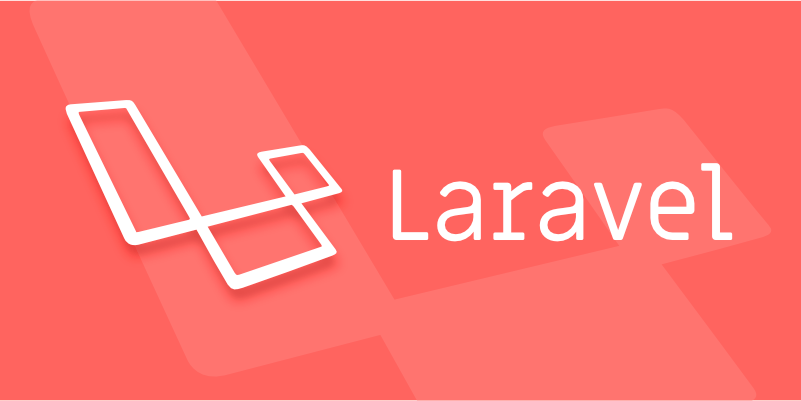Managing File Uploads and Storage in a Laravel Application
Jul 12, 2025 am 03:03 AMProcessing file upload and storage in Laravel requires form configuration, verification, driver selection, security policies and database records. 1. Make sure that the form uses enctype="multipart/form-data", adjusts server upload restrictions and sets verification rules; 2. Select a storage driver according to project requirements, such as the local disk is suitable for small and medium-sized projects, and S3 is suitable for production environments; 3. Use a unique naming strategy to improve security and avoid path crossing and script execution risks; 4. After uploading, save the relative path to the database, and use Storage::url() to generate signature links to ensure that path information is recorded one by one when multiple files are uploaded.

Handling file uploads and storage is an integral part of most web applications, and in Laravel, this process is both flexible and powerful. If you are developing a system that requires users to upload images, documents, or other types of files, it is particularly important to understand how to efficiently and securely manage these operations and subsequent storage methods.

The following is a few practical perspectives to share some experience and suggestions on handling file uploads and storage in Laravel.

Preparation before uploading files
There are several basic configurations and precautions that must be completed before starting to process uploads:
- Confirm that the form uses
enctype="multipart/form-data": This is a prerequisite for uploading files in HTML forms, otherwise the file data will not be submitted correctly. - Check the server's upload limit : PHP's default
upload_max_filesizeandpost_max_sizeare usually smaller. If you allow large files to be uploaded, remember to adjust them inphp.ini. - Set reasonable verification rules : Use Laravel's request verification function (such as
request()->validate()) in the controller to ensure that the upload is in the expected format and control the size limit.
For example:

request()->validate([
'avatar' => 'required|image|mimes:jpeg,png,jpg,gif|max:2048',
]);This prevents non-image files or excessively large files from being uploaded, reducing potential risks.
How to choose the right storage driver
Laravel provides a variety of storage methods, which can be easily switched through the filesystems.php configuration file. Common options include local disk, Amazon S3, FTP, and more.
- Local storage (using
publicorstoragedirectories by default) is suitable for small and medium-sized projects and is simple and easy to use. - Cloud storage (such as S3) is more suitable for production environments and is especially useful when multi-server deployments or CDN acceleration is required.
- If you want the uploaded file to be accessible externally, remember to run
php artisan storage:linkto create a soft link, so that it can be accessed through a URL like/storage/xxx.jpg.
You can choose the most suitable driver based on project size and needs. For example, e-commerce websites may prefer to use S3 to manage product images in a unified manner, while internal management systems can directly use local storage.
Security and file naming policies
The most easiest thing to ignore when uploading files is security issues. Here are some practical suggestions:
Don't trust the file names provided by the user : an attacker may construct a malicious file name or even try a path through the attack. Rename files with unique identifiers, such as
hashor timestamps.Sample code:
$path = request()->file('document')->storeAs( 'uploads', uniqid() . '.' . $file->getClientOriginalExtension(), 'public' );Avoid saving files to the web root directory : this can easily lead to script execution risks. It is recommended to place it under
storage/app/publicand access it through symbolic links.Restrict the permissions for uploading directories : Ensure that the uploading directory cannot execute PHP scripts, and prevent them from being executed after uploading
.phpfiles.
In addition, for sensitive files (such as user private documents), it is considered not to use public disks, but to control access rights through controller logic.
Process the uploaded file path and database records
After the upload is successful, you need to save the file path to the database for subsequent calls. A few points to note here:
- Storage paths are recommended to use relative paths instead of full URLs, which makes it easier to adjust when migrating storage locations.
- If using cloud storage, Laravel's
Storage::url($path)method can automatically generate signed access links, which is helpful for temporary access. - For multiple files uploads, each record can be processed in a loop and saved separately.
For example, suppose you want to save multiple images for an article:
foreach ($request->file('images') as $image) {
$path = $image->store('article_images', 'public');
ArticleImage::create(['article_id' => $articleId, 'path' => $path]);
}In this way, each file has an independent record, which is also convenient for post-query and deletion.
Basically that's it. Laravel provides a complete file processing mechanism, which makes rational use of its built-in functions and combined with some security and performance optimizations to deal with various upload scenarios well.
The above is the detailed content of Managing File Uploads and Storage in a Laravel Application. For more information, please follow other related articles on the PHP Chinese website!

Hot AI Tools

Undress AI Tool
Undress images for free

Undresser.AI Undress
AI-powered app for creating realistic nude photos

AI Clothes Remover
Online AI tool for removing clothes from photos.

Clothoff.io
AI clothes remover

Video Face Swap
Swap faces in any video effortlessly with our completely free AI face swap tool!

Hot Article

Hot Tools

Notepad++7.3.1
Easy-to-use and free code editor

SublimeText3 Chinese version
Chinese version, very easy to use

Zend Studio 13.0.1
Powerful PHP integrated development environment

Dreamweaver CS6
Visual web development tools

SublimeText3 Mac version
God-level code editing software (SublimeText3)
 Working with pivot tables in Laravel Many-to-Many relationships
Jul 07, 2025 am 01:06 AM
Working with pivot tables in Laravel Many-to-Many relationships
Jul 07, 2025 am 01:06 AM
ToworkeffectivelywithpivottablesinLaravel,firstaccesspivotdatausingwithPivot()orwithTimestamps(),thenupdateentrieswithupdateExistingPivot(),managerelationshipsviadetach()andsync(),andusecustompivotmodelswhenneeded.1.UsewithPivot()toincludespecificcol
 Sending different types of notifications with Laravel
Jul 06, 2025 am 12:52 AM
Sending different types of notifications with Laravel
Jul 06, 2025 am 12:52 AM
Laravelprovidesacleanandflexiblewaytosendnotificationsviamultiplechannelslikeemail,SMS,in-appalerts,andpushnotifications.Youdefinenotificationchannelsinthevia()methodofanotificationclass,andimplementspecificmethodsliketoMail(),toDatabase(),ortoVonage
 Understanding Dependency Injection in Laravel?
Jul 05, 2025 am 02:01 AM
Understanding Dependency Injection in Laravel?
Jul 05, 2025 am 02:01 AM
Dependency injection automatically handles class dependencies through service containers in Laravel without manual new objects. Its core is constructor injection and method injection, such as automatically passing in the Request instance in the controller. Laravel parses dependencies through type prompts and recursively creates the required objects. The binding interface and implementation can be used by the service provider to use the bind method, or singleton to bind a singleton. When using it, you need to ensure type prompts, avoid constructor complications, use context bindings with caution, and understand automatic parsing rules. Mastering these can improve code flexibility and maintenance.
 Strategies for optimizing Laravel application performance
Jul 09, 2025 am 03:00 AM
Strategies for optimizing Laravel application performance
Jul 09, 2025 am 03:00 AM
Laravel performance optimization can improve application efficiency through four core directions. 1. Use the cache mechanism to reduce duplicate queries, store infrequently changing data through Cache::remember() and other methods to reduce database access frequency; 2. Optimize database from the model to query statements, avoid N 1 queries, specifying field queries, adding indexes, paging processing and reading and writing separation, and reduce bottlenecks; 3. Use time-consuming operations such as email sending and file exporting to queue asynchronous processing, use Supervisor to manage workers and set up retry mechanisms; 4. Use middleware and service providers reasonably to avoid complex logic and unnecessary initialization code, and delay loading of services to improve startup efficiency.
 Managing database state for testing in Laravel
Jul 13, 2025 am 03:08 AM
Managing database state for testing in Laravel
Jul 13, 2025 am 03:08 AM
Methods to manage database state in Laravel tests include using RefreshDatabase, selective seeding of data, careful use of transactions, and manual cleaning if necessary. 1. Use RefreshDatabasetrait to automatically migrate the database structure to ensure that each test is based on a clean database; 2. Use specific seeds to fill the necessary data and generate dynamic data in combination with the model factory; 3. Use DatabaseTransactionstrait to roll back the test changes, but pay attention to its limitations; 4. Manually truncate the table or reseed the database when it cannot be automatically cleaned. These methods are flexibly selected according to the type of test and environment to ensure the reliability and efficiency of the test.
 Choosing between Laravel Sanctum and Passport for API authentication
Jul 14, 2025 am 02:35 AM
Choosing between Laravel Sanctum and Passport for API authentication
Jul 14, 2025 am 02:35 AM
LaravelSanctum is suitable for simple, lightweight API certifications such as SPA or mobile applications, while Passport is suitable for scenarios where full OAuth2 functionality is required. 1. Sanctum provides token-based authentication, suitable for first-party clients; 2. Passport supports complex processes such as authorization codes and client credentials, suitable for third-party developers to access; 3. Sanctum installation and configuration are simpler and maintenance costs are low; 4. Passport functions are comprehensive but configuration is complex, suitable for platforms that require fine permission control. When selecting, you should determine whether the OAuth2 feature is required based on the project requirements.
 Implementing Database Transactions in Laravel?
Jul 08, 2025 am 01:02 AM
Implementing Database Transactions in Laravel?
Jul 08, 2025 am 01:02 AM
Laravel simplifies database transaction processing with built-in support. 1. Use the DB::transaction() method to automatically commit or rollback operations to ensure data integrity; 2. Support nested transactions and implement them through savepoints, but it is usually recommended to use a single transaction wrapper to avoid complexity; 3. Provide manual control methods such as beginTransaction(), commit() and rollBack(), suitable for scenarios that require more flexible processing; 4. Best practices include keeping transactions short, only using them when necessary, testing failures, and recording rollback information. Rationally choosing transaction management methods can help improve application reliability and performance.
 Handling HTTP Requests and Responses in Laravel.
Jul 16, 2025 am 03:21 AM
Handling HTTP Requests and Responses in Laravel.
Jul 16, 2025 am 03:21 AM
The core of handling HTTP requests and responses in Laravel is to master the acquisition of request data, response return and file upload. 1. When receiving request data, you can inject the Request instance through type prompts and use input() or magic methods to obtain fields, and combine validate() or form request classes for verification; 2. Return response supports strings, views, JSON, responses with status codes and headers and redirect operations; 3. When processing file uploads, you need to use the file() method and store() to store files. Before uploading, you should verify the file type and size, and the storage path can be saved to the database.






